Custom metal post & core restorations are critical for cases with compromised tooth structure, where standard prefabricated posts fall short. This article breaks down the cost-influencing factors of these restorations from both clinical and dental lab perspectives, helping dental professionals and procurement managers make informed, cost-effective decisions without compromising quality.
Custom metal post & core restorations are influenced by multiple factors including case complexity, canal anatomy, lab fabrication method, material choice, and communication accuracy between clinic and lab. These elements determine technician time, material waste, and fit precision, which collectively drive the final restoration cost.
What Are Custom Metal Post & Core Restorations?
Custom metal post & core restorations are used when a tooth has extensive structural loss and cannot retain a crown on its own. These restorations offer a custom-fit substructure for optimal support and long-term crown stability. For dental clinics and private practitioners, understanding when customization is needed—and how it differs from prefabricated options—can directly impact restoration success rates and lab collaboration efficiency.
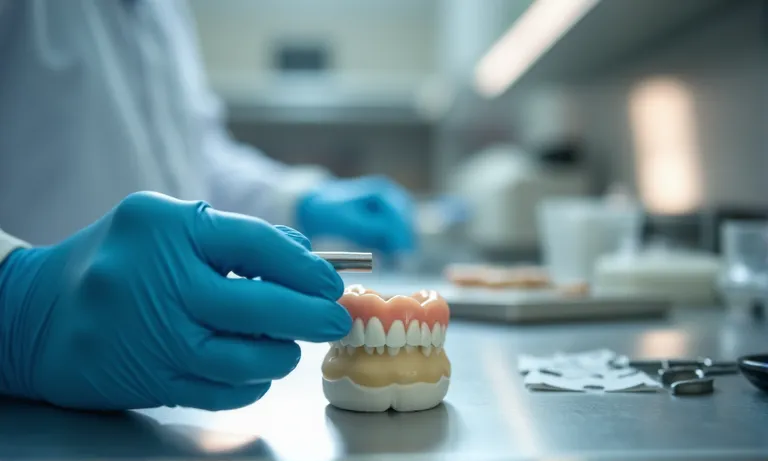
Custom-metal-post-core-fit-dental-lab
When Customization Is Needed for Optimal Fit
Custom post & core restorations are typically required when canal shapes or alignments deviate from standard anatomy. At Raytops Dental Lab, we often encounter such cases from clinics dealing with:
- Flared or oval-shaped canals after endodontic treatment.
- Deep canal preparations where off-the-shelf posts cannot achieve full depth adaptation.
- Multi-rooted teeth requiring multiple post paths or angled customizations.
In these scenarios, custom metal posts ensure full adaptation to the internal anatomy, reducing micromovement, improving retention, and ultimately minimizing the risk of post debonding or core fracture.
Custom Posts vs Prefabricated Posts: A Comparison
Not all cases require a custom solution, but understanding the trade-offs is key to making an informed choice. Below is a side-by-side comparison based on common clinic scenarios:
| Feature | ✅ Custom Post & Core | ❌ Prefabricated Post |
|---|---|---|
| Fit accuracy in irregular canals | Tailored to canal shape | Often suboptimal, may require cement buildup |
| Time required at chairside | Minimal adjustments needed | May require modification or multiple tries |
| Risk of post debonding | Lower due to intimate adaptation | Higher due to poor fit |
| Initial unit cost | Higher upfront | Lower upfront |
| Long-term stability | High with proper case selection | Variable based on fit |
In practice, we recommend custom metal posts when anatomical complexity, alignment challenges, or high occlusal loads are present. Prefabricated posts remain suitable for straightforward, single-rooted cases with good canal geometry.
✅ Custom posts ensure longevity in complex cases – TRUE
When canal anatomy is atypical or when long-term retention is critical, a lab-made custom post offers a significantly better fit, reducing long-term complications.
❌ Prefabricated posts are always suitable – FALSE
While they serve well in standard cases, relying solely on stock posts in complex anatomies often leads to compromise in fit, function, or aesthetics.
How Workflow Decisions Impact Custom Post & Core Costs
The workflow choices made by your dental lab partner directly influence the cost and consistency of custom metal post & core restorations. For dental clinics, DSOs, and procurement managers, understanding how lab-side decisions—such as modeling method, technician labor, and material handling—translate into cost variability can support better collaboration and case planning.

Dental-lab-post-core-casting-process
Indications for Custom Posts in Complex Cases
Cases that require custom posts often share certain clinical or structural indicators. For labs like Raytops Dental, these signs influence not only case planning but also time and resource allocation:
- Excessive tooth structure loss below the gumline.
- Non-parallel or multi-canal paths requiring split or angled post design.
- Post-cement space management needing tailored spacing in the die model.
- Patient-specific occlusal loads requiring alloy selection matched to stress zones.
From a lab’s perspective, identifying these indicators early—especially through detailed Rx forms or intraoral scans—streamlines case prep and minimizes remakes. When these complexities are communicated late or insufficiently, labs must allocate additional technician time, re-modeling, and fitting checks, all of which increase unit cost.
Workflow Factors That Add to Cost
Below is a breakdown of key workflow decisions that commonly drive cost increases:
- Die Customization Level
- Deep or irregular canal molds demand additional technician modeling steps.
- Impression Accuracy or Digital Scan Quality
- Poor captures mean model rework or multiple attempts to ensure fit accuracy.
- Material Handling & Casting Prep
- Manual wax-ups vs digital CAD/CAM prep impact technician hours and burn-out waste.
- Communication Loop Between Clinic & Lab
- Incomplete information may lead to trial-and-error fabrication, increasing turnaround time.
- QC Rounds and Adjustment Prep
- Complex designs often need more checkpoints before final polish and delivery.
✅ Detailed case planning reduces lab-side rework – TRUE
Clear communication of canal shape, margin location, and post space improves workflow efficiency and helps control costs.
❌ All lab workflows cost the same regardless of case complexity – FALSE
Custom posts vary widely in design and technical demands. More complex cases require more steps, time, and quality assurance, all of which impact final pricing.
Key Material Factors That Impact Cost
The cost of a custom metal post & core is closely tied to material selection. Each alloy carries different implications for strength, biocompatibility, radiographic visibility, and market volatility. For procurement leads in DSOs, private dentists, and partner labs, understanding how these factors affect pricing helps in both clinical planning and vendor negotiation.
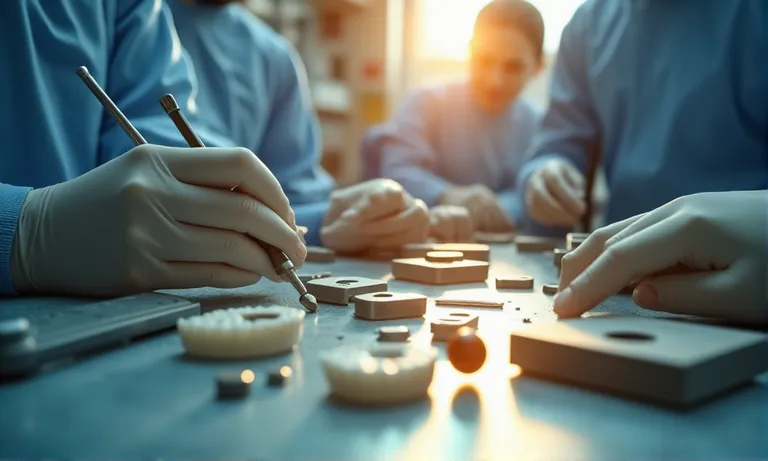
Dental-metal-materials-comparison-post-core
Comparing Titanium, Stainless Steel, and Noble Metals
Choosing between different metals isn’t just about price—it’s about balancing cost with clinical needs and lab capability. Below is a comparative breakdown we use internally when clients are unsure about their material direction:
| Metal Type | 💡 Strength & Fit | 🔬 Biocompatibility | 💰 Relative Cost | 🦷 Use Case Scenario |
|---|---|---|---|---|
| Titanium | High | Excellent | Moderate | Long-term restorations, high biocompatibility priority |
| Stainless Steel | Moderate | Acceptable | Low | Posterior cases with low esthetic demand |
| Noble Alloy (e.g., Gold) | Excellent | Excellent | High | Premium anterior cases, patient preference for longevity |
Titanium is often the best all-around option, while stainless steel remains a budget-conscious choice. Noble alloys are reserved for specialty requests due to their high and fluctuating cost.
Biocompatibility and Alloy Purity: Cost Implications
From a lab’s perspective, alloy purity directly impacts:
- Casting reliability:Impure alloys introduce porosity and risk miscasts.
- Surface finishing time:Higher purity often means smoother finishes with less technician labor.
- Allergy management:For clinics with sensitive patients, biocompatible metals like titanium avoid nickel-related complications.
We often see rework or lab-client misalignment when alloy selection is not aligned with the patient’s history or clinician’s priority.
Radiopacity and Material Selection Preferences
Clinics often ask us to prioritize radiopacity for post-operative assessment. Material choice affects this:
- Titanium and noble metals are highly radiopaque, aiding follow-up imaging.
- Stainless steel offers adequate radiopacity, but may require image clarification.
Lab input can help balance radiopacity needs with overall restoration goals—especially when clinicians submit imaging as part of the prescription.
Market Factors Influencing Raw Metal Prices
Global commodity pricing significantly affects custom post costs—especially for noble metals. Lab pricing models must flexibly adapt to:
- Precious metal index shifts (e.g., gold, palladium)
- Titanium import regulations
- Supply chain pressures post-COVID
At Raytops Dental, we maintain a rolling cost tracker for high-volatility metals and offer clients quarterly updates to support long-term cost planning.
To summarize, the metal you choose affects not just unit cost but long-term performance and patient safety. A material that aligns with case demands, imaging preferences, and supply stability ensures smoother collaboration between lab and clinic.
If you’re weighing material options for specific case types or patient profiles, we’re happy to share how we typically approach these selections across different markets.
How Lab Fabrication Processes Affect the Final Cost
Fabrication choices within the dental lab play a significant role in determining the total cost of a custom post & core restoration. For dental clinics and procurement teams, understanding these variables helps explain price differences across cases—and informs more efficient collaboration with labs like Raytops Dental.
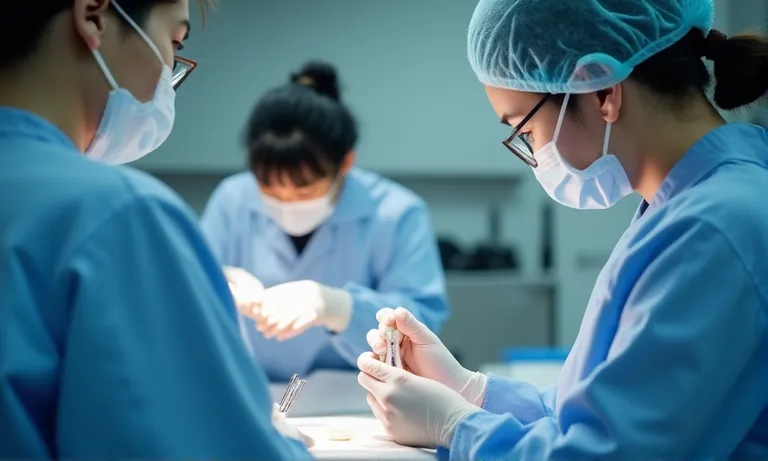
Dental-lab-CADCAM-vs-manual-post-fabrication
Manual vs. CAD/CAM Fabrication: Cost Differences
The production method directly affects turnaround time, material waste, and technician labor. Here’s how the two approaches typically differ:
| Aspect | 🔧 Manual Fabrication | 💻 CAD/CAM Fabrication |
|---|---|---|
| Technician labor | High | Lower once design is digital |
| Reproducibility | Depends on technician skill | High precision, consistent |
| Setup time | Low (simple wax-up) | Higher initial scan/design |
| Cost per unit (small batch) | Often lower | Higher (due to setup time) |
| Cost per unit (large batch) | Higher | More economical at scale |
At Raytops, we evaluate case complexity, margin visibility, and restoration volume before deciding which method is more appropriate—always balancing cost with accuracy.
Complexity of Components: Post, Core, and Sleeves
Cases involving multiple components—such as separate core build-ups, cast-in-place ferrules, or parallel-sleeve systems—increase lab workload and materials usage:
- Additional waxing and indexing steps are needed per added piece.
- Internal fit calibration becomes more demanding.
- Each unit must pass QC independently, increasing inspection time.
Clinics submitting such cases should include clear diagrams or scan files to reduce remakes and delays.
Fit Accuracy and Die Customization for Precision
High-precision fit requires:
- Die trimming by experienced techs to expose canal margins without distorting the model.
- Verification of insertion path before casting or milling.
- Polishing and fit-checking post-casting using analog dies.
Poor die models or unclear path angulation data often require repeat attempts—driving up both time and unit cost.
Turnaround Time and Technician Labor: Cost Drivers
Rush orders or re-fabrication requests compress normal production timelines. Cost increases typically result from:
- Extended technician shifts or rescheduling.
- Priority use of milling equipment, disrupting batch efficiency.
- Accelerated metal finishing, which can reduce polish quality unless carefully managed.
We recommend aligning expectations on turnaround time during the planning phase—especially when post fabrication is part of a multi-unit or temporized case.
✅ CAD/CAM offers cost efficiency in scaled cases – TRUE
Once digital design is established, CAD/CAM delivers consistent, time-efficient units—especially beneficial in bulk or standardized cases.
❌ Manual wax-ups are always cheaper – FALSE
For complex anatomies or multi-part components, manual processes demand more time, quality checks, and post-cast refinements—often making them more expensive per case.
Clinical Factors That Increase Custom Post Complexity
The clinical realities of root canal morphology and tooth preparation significantly influence the complexity—and cost—of custom metal post & core restorations. For clinicians and purchasing managers alike, understanding these variables helps anticipate lab effort, avoid rework, and ensure realistic expectations in both planning and pricing.

Complex-root-canal-custom-post-prep
Atypical Canal Shapes and Lengths: Impact on Cost
Canals that deviate from the norm require custom adaptation:
- Flared canals need taper-matching, often done manually.
- Curved roots introduce challenges in achieving passive insertion.
- Long post spaces demand stable casting and careful angulation handling.
From a lab’s perspective, these traits often lead to extended wax-up and casting refinement time. They may also limit the use of standard digital modeling libraries.
Post Alignment Challenges: Labor and Cost Implications
Cases with misaligned or multi-rooted canals are particularly demanding:
- Angled post paths must be captured precisely to avoid binding.
- Multi-canal posts may require dual or split-path design, with added indexing.
- Inadequate alignment data often results in misfit posts, needing remakes.
Such cases demand additional technician calibration and often a secondary verification model. Communicating angulation via scan or diagram saves both cost and time.
Grooves and Ferrule Design: How They Add to Costs
Retention grooves and ferrules serve biomechanical purposes—but they’re not cost-neutral:
- Retentive grooves require hand-carved precision on the core pattern.
- Custom ferrules may involve multiple wax layers and marginal adjustments.
- Die relief and spacer control are more labor-intensive with such features.
We recommend labs and clinicians clarify when such design elements are “functional musts” vs. esthetic preferences, as this directly affects workload and price.
Core Build-Up and Cast Post: A Cost Consideration
In some cases, the post and core are fabricated as a monoblock. In others, the core is built separately:
- One-piece cast posts are time-efficient but less flexible in revision.
- Separate core buildups allow re-try and margin modification but increase technician steps.
We often discuss this trade-off during pre-case planning to align both function and cost expectation.
✅ Unusual canal anatomy increases lab time and cost – TRUE
Non-standard canal paths, curves, and post depth all demand more adaptation, often beyond what digital workflows can automate.
❌ All post cases require the same lab process – FALSE
Anteriors with straight roots and good prep differ vastly from molars with curved, flared, or dual canals. Lab workflows must scale accordingly.
Logistics and Service Inclusions That Affect Pricing
Beyond materials and fabrication, the logistics and support services bundled into a custom post & core order can significantly affect pricing. For distributors, dental clinics, and procurement teams, knowing what’s typically included—and what may incur additional charges—helps align expectations and avoid surprise costs.
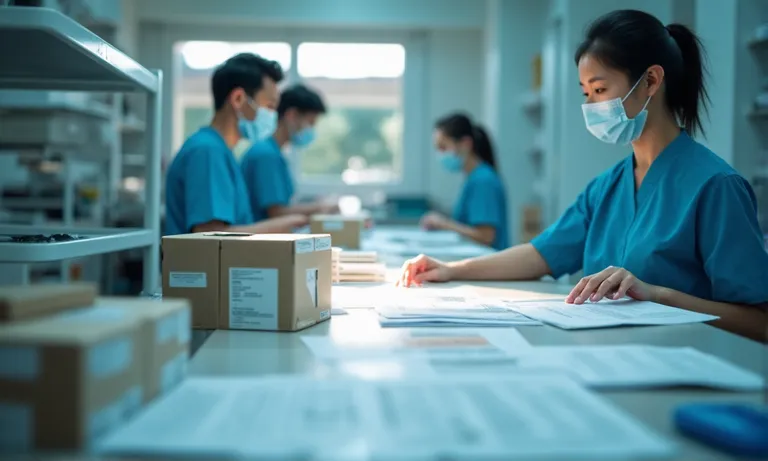
Dental-lab-case-logistics-qa-documents
Shade Matching and Photography Review: Added Services
While less critical for post & core than for crowns, shade matching and visual records may still be included when:
- The core extends coronally and may show through in translucent ceramics.
- Clinicians request visual documentation for patient communication or case audits.
- Post/core is part of a larger anterior aesthetic case where the foundation color matters.
At Raytops, we often review reference photos if sent, and include a basic color mapping sheet when needed—this adds technician time but supports clinical clarity.
Shipping, Handling, and Rush Fees: What to Expect
These operational factors influence per-case cost:
- Standard shipping is usually included in base pricing for long-term partners.
- Rush turnaround (24–48h) adds technician load and logistics coordination, often billed separately.
- Packaging preferences, such as eco-friendly or country-specific compliance materials, can also introduce minor surcharges.
We recommend partners clarify shipping expectations at the start of collaboration to avoid delays or unplanned costs.
QA Reports and Warranty Policies: Value Additions
Structured case reporting and support policies are often overlooked—but they add real operational value:
- Inspection reports include material batch codes, technician checks, and notes on fit or margin concerns.
- Warranty policies may cover fit-related issues within a defined time window (e.g., 60–90 days).
- Rework tracking helps identify patterns, reduce repeat issues, and support clinic-side protocol refinement.
These inclusions enhance traceability and reliability, especially for DSOs or labs that require documentation for internal QA or compliance.
Some service components—like detailed case notes or rush prep—are optional. Others, like packaging and base QA checks, are embedded into our production workflow. Understanding what’s included versus what’s elective supports transparent pricing discussions from the outset.
If you’re coordinating multiple cases across regions or need help aligning shipping and documentation preferences, feel free to reach out—we’re happy to walk you through how we manage this across different markets.
Optimizing Cost While Maintaining Quality in Custom Posts
Balancing cost-efficiency with clinical performance is a shared goal between clinics, DSOs, and dental labs. At Raytops Dental, we’ve found that consistent protocols and transparent collaboration reduce unnecessary rework and help both sides deliver stable, quality outcomes at controlled costs.
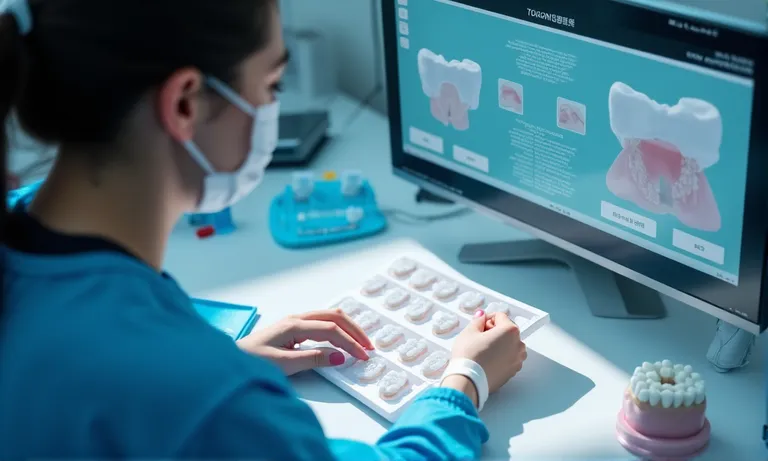
Dental-lab-cost-optimization-custom-posts
Standardizing Prep Protocols to Reduce Cost Variability
Inconsistent preparations can lead to increased lab time and rework. We recommend:
- Clear finish line exposure—no hidden margins.
- Uniform canal space prep with smooth walls and confirmed depth.
- Digital scans with angulation data if possible.
When clinics follow standardized prep templates, fabrication becomes more predictable and efficient.
Leveraging Tiered Pricing for Cost Efficiency
For DSOs or partner labs, tiered pricing helps balance high-volume and complex-case costs:
- Routine, low-complexity posts benefit from batch efficiency.
- High-difficulty posts priced with transparent criteria (e.g., angle correction, split-path design).
This structure avoids flat-rate overcharges while protecting quality on demanding cases.
Monitoring Fit and Rework Rates to Optimize Costs
Tracking remakes and reworks helps identify improvement opportunities:
- High rework frequency often correlates with unclear prescriptions or prep inconsistency.
- Fit logs across cases reveal margin error trends, scan errors, or packaging issues.
We often work with partners to review these trends quarterly, jointly adjusting lab and clinic-side practices.
Bulk Ordering: How Batch Orders Can Optimize Fees
Batch submissions allow economies of scale in:
- Digital setup and milling—reduced per-case overhead.
- Material handling—less casting waste across grouped units.
- Shipping costs—combined logistics per region or clinic group.
Even for custom posts, bulk handling improves throughput and consistency when volume allows.
By focusing on preparation quality, communication clarity, and thoughtful batching, clinics and labs can reduce cost pressure without sacrificing precision or longevity.
That’s where the value of collaboration becomes most visible.
Conclusion
Efficiently managing the cost of custom metal post & core restorations requires understanding the technical, clinical, and operational factors that drive pricing. For dental clinics and procurement teams, aligning expectations with your dental lab partner—especially on prep standards, material use, and workflow transparency—ensures better outcomes at controlled costs.
- Complex anatomies demand custom posts for full-fit precision. Indications for Custom Posts
- Manual or CAD/CAM fabrication methods significantly impact cost. Fabrication Processes
- Canal shape, alignment, and depth all affect lab time and pricing. Clinical Factors
- Material choice affects not only unit cost but radiopacity and biocompatibility. Material Impact
- Workflow decisions—like impression quality and die prep—change technician workload. Workflow Costs
- Extra services and logistics also shape the overall pricing model. Logistics Pricing
- Standardized prep and volume batching help optimize fees without quality loss. Cost Optimization
For case planning support or material selection advice, feel free to contact Raytops Dental Lab to discuss how we can help streamline your restoration workflow across markets.


